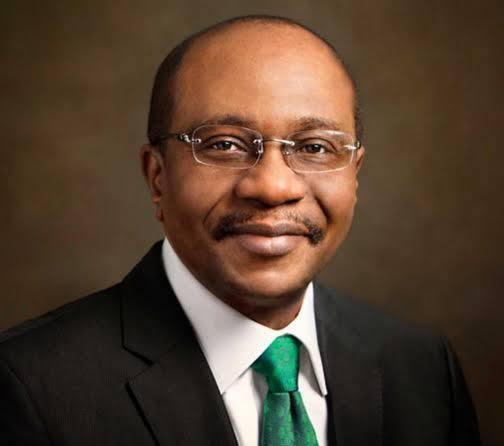BY CHINEDU GEORGE NNAWETANMA
It comes as no surprise, though, given the near-unprecedented rise in the prices of goods and services in the country in recent times. July 2022’s inflation rate – the highest in the country since 2005 – stood at 19.64%, up from 15.60% in January 2022, according to the National Bureau of Statistics (NBS).
Even without official statistics to back it up, Nigerians have been feeling the pangs of inflation for quite some time now, as the price of virtually everything seems to increase with each visit to the market. Some may even argue that the NBS’ reports do not paint a true picture of what is on ground.
This is happening despite several interventions made by the Federal Government, mostly through the Central Bank of Nigeria (CBN), to stem the tide. And it makes one wonder if the government is failing to tackle inflation.
While this may seem true, an insight into the different dimensions of inflation will reveal why Nigeria’s inflation is particularly difficult to tackle and why the CBN’s policies have proven to be ineffective, at least in the short run.
As we all know, inflation, by definition, is a general increase in the prices of goods and services in an economy. What most people do not know, however, is that there are two types – and causes – of inflation: demand-pull inflation and cost-push inflation.
Demand-pull or demand-side inflation is what readily comes to mind when people think of inflation. It is a phenomenon that occurs when an increase in demand encourages producers and sellers to raise their prices in order to maximize their profits.
It is measured using the consumer price index (CPI). The 15.60% and 19.64% inflation rates stated earlier in this write-up are derived from the CPI.
The second major type of inflation is the cost-push or supply-side inflation. It occurs due to an increase in the cost of raw materials and the overall cost of production, which ultimately forces producers to pass the extra cost to their customers to remain profitable.
Rising cost of production can also force producers to reduce their output, thereby making their products rarer and, therefore, pricier. The producer price index (PPI) can be used to measure inflation from the perspective of the producers.
Now that we are more familiar with inflation, it will become easier to understand why the CBN has not been so effective in controlling it in Nigeria. Addressing demand-pull inflation requires contractionary monetary and fiscal policies by the government.
It can raise the policy interest rate (known as the Monetary Policy Rate or MPR in Nigeria), thereby making it costlier to borrow (as banks will also raise their respective lending rates) and more profitable to save (as bank deposits will yield more interest).
In theory, a hike in the MPR reduces the volume of money in circulation and curbs demand, because people would rather save than spend or borrow, since saving now yields more returns.
The CBN can also tackle demand-pull inflation using open market operations, such as selling treasury bills and bonds, to “mop up” excess liquidity from the economy. If people buy more treasury bills and bonds, they will have less money to spend until the maturity periods of the financial instruments.
Fiscal policies like raising taxes or reducing government expenditure theoretically achieve the same inflation-curbing effects. They will reduce the disposable income of consumers, the spending power of businesses and, eventually, the demand for goods and services.
If you have been following the news this year, you will notice that the government has implemented some of these measures in recent times. For instance, the CBN jacked up the MPR from 11.5% to 13% in May and again to 14% in July.
Since May, however, the inflation rate in Nigeria has increased from 17.71% to 19.64%, showing that these policies have had little or no effect.
Contrary to popular belief, supply-side inflation is the major cause of inflation in Nigeria. Nigeria is a poor country, with nearly half of its residents surviving on less than $1.90 per day. Unemployment is also very high, and many people are just getting by.
There is simply not enough money in circulation to generate the kind of demand that will trigger demand-pull inflation.
This is why policies that the CBN has rolled out over the past several months to tackle inflation do not seem to be working.
They are designed to reduce money supply and demand. While such policies can provide occasional short-term relief, the long-term solution to Nigeria’s inflation crisis (or stagflation, as some would argue) lies in implementing supply-side-inflation-curbing measures that will bring down the high cost of production.
But supply-side inflation is more difficult to control than demand-side inflation. Being an import-dependent economy, the prices of most goods and services in Nigeria are at the mercy of vagaries in foreign markets and fluctuations in the exchange rate.
In most cases, the prices of imported raw materials, industrial goods and consumer goods are already high by the time they get to our seaports.
Local production, on the other hand, is hamstrung by several deep-seated factors, ranging from insecurity and poor power supply to weak transportation infrastructure and multiple taxation, all of which have conspired to make locally made products almost as costly as their imported counterparts.
Tackling supply-side inflation requires a holistic, macro-level approach by the government.
It requires strategies and plans that will supercharge local production through cost reduction, encourage the use of local raw materials and other inputs in production, cut down the appetite for imported goods, stem the foreign exchange crisis, improve security, upgrade critical infrastructure, and attract foreign investments.
Only when these long-term solutions are implemented can Nigerians get a reprieve from the country’s perennial inflation crisis.
Source: pulse.ng

